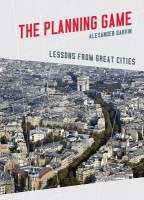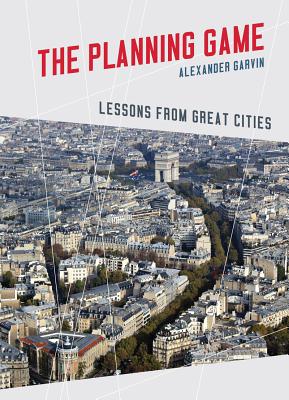 Author: Alexander Garvin
Author: Alexander Garvin
Publisher: W.W. Norton & Company Inc. – 223 pages
Book Review by: Deekay Daulat
This extremely beautiful, large-size, superior-quality hardcover book is very illuminating, informative and insightful. It contains 202 full-color diagrams, maps and photographs – created especially for this book – that add tremendous value to this one-of-a-kind treasure.
Besides obviously the tremendous knowledge one derives from the textual and illustrative content that is presented within its eight chapters by the Alexander Garvin, he has generously provided 10 pages of Notes for further reference and study, plus a fully searchable Index of seven pages for easy lookup on any given topic relating to architecture, cities, planning, real estate, or other subject.
Garvin presents the unique features of four major cities he has chosen to focus in this book: Chicago, New York, Paris and Philadelphia.
The first chapter serves as the Introduction to this book and it focuses on the all-important subject of planning. In the next two chapters, the author discuss the players and the rules of the game of planning; in the next four, he covers each of the four cities mentioned; and in the eighth chapter he presents the benefits and the challenges of the planning game in the 21st century.
The author points out that there are numerous players in the planning game in which there are winners and losers, as well as the also-rans. Among the typical participants, especially in commercial development, are: architects, bankers, brokers, bureaucrats, community leaders, developers, elected officials, engineers, government agencies investors, lenders, lawyers, property managers and tenants (ranging from anchor or key tenants to small ones).
Of course, there are also individuals and groups of concerned citizens who worry about the impact (good or bad potential effects, financial or otherwise) of the development issue or plan, and among these are: appointed public officials, business owners, chambers of commerce, civic groups, community organizations, critics, cultural institutions, property owners, and utility companies. And of course, dreamers and reformers who have ideals, whether or not they are practical; and last but not the least, taxpayers.
The planning game is a complex one. Even though the government tends to dominate the planning process and retain control, compromises are often made, Garvin asserts. The players use various strategies and take actions that end in physical and financial results that benefit some and hurt others.
This game affects many individuals. As Garvin writes: “Planning often brings hardship; it can damage lives and hurt bystanders. And, unlike other games, planning involves a huge number of people with different roles and objectives, for whom winning may mean very different things.” The many people who participate simply by voicing their opinions are in effect part of the planning process, even though that thought may not enter their minds.
Garvin highlights the main features of four cities mentioned earlier in separate chapters. We briefly mention below what he writes about one of them: Paris.
For example, he writes that Paris is one of the most beautiful cities in the world even though few of its buildings rank among the world’s outstanding examples of architecture. He notes that when 19th century planners began to think about the city, what guided them was the ‘public realm framework’ in which everyone shared in its beauty.
Paris is known for its numerous public parks and wide-open boulevards, tree-lined avenues, and sidewalk cafes where one can meet a friend for a cup of coffee or enjoy reading a newspaper. Paris is what it is now because at one point its city leaders decided to pursue a program of public investment in public property, Garvin emphasizes .
This investment included infrastructure, streets and squares, public buildings and parks, transportation system and other facilities. He explains: “The Paris we know today is the product of those strategic public investments made by many different governments over nearly two centuries.”
Alexander Garvin has combined a career in urban planning and real estate with teaching, architecture and public service. He is an adjunct professor of urban planning and management at Yale University, where he has taught for 45 years, most notably “Introduction to the Study of the City.”
Garvin is currently the president and CEO of his own planning and design firm in New York City and has been involved in major projects in Florida, Georgia, Maryland, Nebraska, Tennessee and Texas. In 2002-2003 he was vice president for planning, design and development of the Lower Manhattan Development Corporation, the agency charged with the redevelopment of the World Trade Center site after 9/11.
He has held prominent positions in New York City government, including deputy commissioner of housing and city planning commissioner. He has won numerous awards from the American Planning Association, the American Institute of Architects, and the Municipal Art Society. He is the author of two other books: The American City: What Works, What Doesn’t and Public Parks: The Key to Livable Communities.







